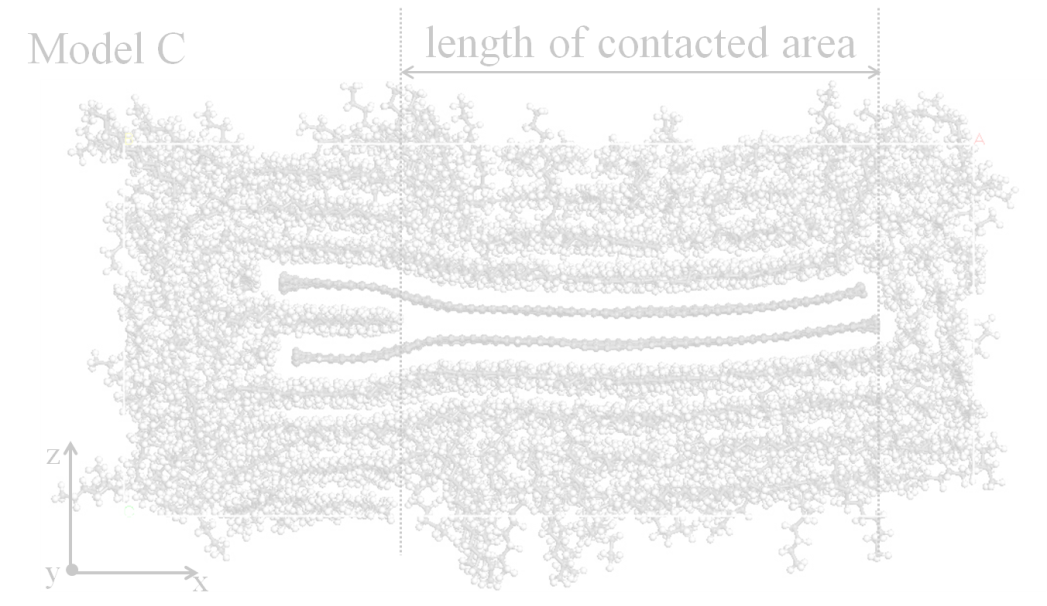Research Projects

Possible Research will include the following
-
Electron-electron correlation physics (Faculty Mentor: Dr. R. T. Clay, Physics)
Dr. Clay's research is aimed at understanding the effect of electron-electron interactions in materials. Electrons in materials determine many important properties of the material, for example whether the material is conducting, insulating, or semiconducting. Electrons are charged particles and interact with each other through the Coulomb interaction. In many materials, the approximation that electrons do not interact with each other works surprisingly well. However, in some cases this approximation breaks down. Often such "strongly correlated" materials exhibit very unusual electronic properties such as antiferromagnetism or superconductivity.
While the Schroedinger equation describing electrons in a material can be written down, a solution of the full problem is not feasible. However, much simpler model systems can be used to understand the essential effects electron-electron interactions that determine the properties of materials. The most well-known of these models is the Hubbard model, which keeps electron-electron interactions at only very short distances. These models can still not be solved analytically, and much of our knowledge of them comes from numerical solutions. Dr. Clay develops numerical methods to solve these interacting models. Some of the current topics under research in his group are the effect of electron-electron interactions on superconducting pairing, the effect of phonons (crystal vibrations) on electronic properties, and electronic transitions in multi-band systems.
-
Multifunctional materials (Faculty Mentor: Dr. S. R. Gwaltney, Chemistry)
In this project REU participants will perform calculations on multi-functional materials, specifically polymers that are both structural and chemoresponsive. Specifically, Gwaltney's group has been modeling polymers whose absorption or fluorescence spectra change in response to a chemical species in the environment. REU participants will perform calculations of absorption and fluoresence spectra in order to tune the optical properties of these systems.
-
Machine learning prediction of interatomic forces (Faculty Mentors: Dr. D. E. Dickel, Dr. C. D. Barrett, Mechanical Engineering)
While ab initio methods are a powerful tool for exploring the properties and behaviors of molecules based on firmly grounded physical principles, their computational expense prevents them for being utilized to simulate all but the smallest length and time scales. Machine learning methods have emerged in recent years as a method of efficiently encapsulating the rigorous results from such simulations in a formalism that is scalable to system sizes of millions of atoms. REU participants will help to develop such a machine learning model to predict the interatomic forces for simple organic molecules.
-
Photophysical properties of novel PAHs and their complexes (Faculty mentor: Dr. C. E. Webster, Chemistry)
Polycyclic aromatic hydrocarbons (PAHs) have gained significant attention in materials chemistry for their unique photophysical properties useful for organic light emitting diodes (OLEDs), photovoltaics, field-effect transistors, organic electronics, and sensors. Pyrene, a highly aromatic molecule comprised of four fused benzene rings, is a ubiquitous building block for synthesizing exceptionally conjugated compounds, or polymeric materials. While many of these fused-ring systems are planar, nonplanar or twisted conjugated molecules are rapidly emerging due to new applications in nonlinear optics, semiconductors, OLEDs and electronic devices. Notably, twisted molecules have displayed improved stability, enhanced solubility, and provide chiroptical properties deeming them versatile in new materials. A new category of distorted ribbon-like PAHs termed pyrene-fused twistacenes has recently been developed and shows imminent promise toward incorporation in OLED devices. Twisted pyrene-fused molecules are often characterized by the degree of their torsion angle at the carbon atoms in the K-region of pyrene.
In collaboration with Professor Robert Gilliard (University of Virginia) whose groups work on the synthesis of these novel materials, we will study the molecular and electronic structure of these class of molecules with respect to their light emitting properties. In this project undergraduate students will be introduced to main-group organometallic chemistry, data organization and scripting, computational methodologies for electronic structure.
-
Machine learning for materials discovery for optoelectronic applications (Faculty Mentor: Dr. N. Rai, Chemical Engineering)
In this project, the REU student will work on designing hybrid organic, inorganic materials for optoelectronic applications such as light-emitting diodes, photodetectors, and photovoltaics. They will gain a working understanding of state-of-the-art electronic structure methods for property prediction, data science, and machine learning.
-
Continuous Data Assimilation (Faculty Mentor: Dr. A. Diegel, Mathematics)
The incorporation of "real-time" data into numerical simulations of mathematical models has the potential to improve our current understandings of these physical processes. One such approach is continuous data assimilation (CDA), which specifically allows for model validation under specific initial states as a simulation progresses. CDA has successfully been implemented in numerical methods for models of fluid flow. Preliminary results suggest that CDA can be incorporated into simulations modeling a variety of physical processes beyond those strictly related to fluids. REU participants will work on developing numerical CDA methods for mathematical models related to materials science.
-
Microstructure of metals (Faculty Mentors: Dr. J. L. Moore, Dr. E. M. Collins, MSU HPC2)
The strength and behavior of metals is strongly dependent on the microstructure. Individual crystal grains of metal can have very different strengths depending on what direction they are compressed, but there are generally thousands of individual grains in a sample. If they are sufficiently random, the bulk behavior behaves homogenously, but all manufacturing processes cause modifications of the grain structure. Some manufacturing methods, like rolling, align the grain structure so you get orientation dependent mechanical behavior. Additive manufacturing creates strongly non-homogenous grain structures, which can lead to large variations in strength and non-linear mechanical behavior. To correctly predict the behavior of manufactured material we must simulate the effects of the underlying microstructure. In this project, REU participants will be introduced to the concept of computational engineering, GPU computing, High Performance Computing (HPC), and microstructure behavior of metals.
